Blog

Water damage is one of the most common issues homeowners face, but it’s also one of the most underestimated. A small leak or minor flood may seem manageable at first glance, but the truth is, water has a way of infiltrating hidden spaces and creating long-term problems. At Vortex, we’ve seen firsthand how water damage can escalate, and we’re here to help families in the Wichita, KS area and protect their homes with expert water removal and restoration services.In this blog post, we’ll uncover five hidden dangers of water damage and explain how professional intervention can make all the difference. 1.Mold Growth Lurking in Hidden Spaces One of the most dangerous consequences of water damage is mold growth. Mold can develop in as little as 24 to 48 hours after water exposure, especially in areas like basements, crawl spaces, and behind walls where moisture lingers. Even a small amount of mold can affect your home’s air quality and pose health risks, including respiratory issues and allergies. At Vortex, we don’t just stop at water removal. Our skilled team provides thorough mold remediation services to ensure your home is safe and mold-free. Regular mold evaluations are also key to catching hidden mold before it becomes a larger issue. 2. Structural Damage That Weakens Your Home Water doesn’t just soak your carpets and furniture—it can seep into your home’s foundation, walls, and support beams. Over time, this can lead to sagging ceilings, warping floors, and even cracks in your foundation. These issues can compromise the structural integrity of your home, making it unsafe for you and your family. 3. Contaminated Water Poses Health Hazards Not all water is clean. If the source of water damage is a sewage backup, stormwater, or contaminated floodwater, it can introduce harmful bacteria, pathogens, and toxins into your home. Contaminated water is a serious health hazard and must be handled by professionals with the right equipment and expertise. 4. Damage to Your HVAC System Water damage doesn’t just affect what you can see—it can also infiltrate your HVAC system, spreading moisture and contaminants throughout your home. Damp air ducts can become a breeding ground for mold, mildew, and bacteria, which will circulate through your vents every time your system runs. That’s why Vortex offers air duct cleaning and dryer vent cleaning services as part of our restoration process. Cleaning your HVAC system after water damage ensures your indoor air quality is fresh and free of contaminants. 5. Escalating Costs from Delayed Action One of the most significant dangers of water damage is the cost of waiting too long to address it. The longer water sits, the more damage it can cause. A minor leak can quickly escalate into a costly repair if it’s left unchecked, especially if mold or structural issues develop. Acting quickly can save you money and prevent unnecessary stress. Don’t Let Water Damage Take Over Your Home If you’re dealing with water damage in Derby, KS, or Wichita, KS, don’t wait to take action. The sooner you call Vortex, the faster we can help you minimize damage, prevent mold, and restore your home to its original condition.Whether it’s a minor leak or a major flood, trust Vortex to handle your water removal and restoration needs. Contact us today to schedule an assessment and let our team protect your home from the hidden dangers of water damage.

When it comes to maintaining a clean and healthy home or business, sewer cleanup is an essential task that often goes overlooked—until it becomes a pressing issue. Sewer line backups, clogged drains, and black water damage can cause severe problems, impacting not only your property but also your health. At Vortex, we understand the urgency and delicacy of these situations, and we’re here to provide expert sewer cleaning and restoration services to the residents of Derby and Wichita, Kansas. The Importance of Sewer Cleanup Sewer issues can arise for a variety of reasons, including clogged drains, tree root intrusion, or aging sewer lines. When these problems occur, they can lead to sewer backups, toilet overflows, and black water damage—posing serious risks to your property and health. Black water, in particular, contains harmful bacteria and pathogens that can cause illnesses if not handled properly. Timely sewer cleanup and restoration are critical for the following reasons: Preventing property damage: Sewer water can quickly infiltrate walls, floors, and furniture, leading to costly repairs. Protecting your health: Exposure to contaminated water can result in infections, respiratory issues, and other health concerns. Avoiding unpleasant odors: Sewer backups often come with foul odors that can linger in your home or business. Preserving structural integrity: Over time, prolonged exposure to water damage can weaken the foundation and structure of your property, leading to long-term issues. Common Causes of Sewer Damage Residents in Derby and Wichita, KS, may encounter sewer problems due to the following: Clogged Drains: Accumulation of grease, hair, and debris can block pipes, leading to backups. In homes and businesses, food scraps and oil are often culprits that build up over time, reducing water flow and causing eventual obstructions. Tree Root Intrusion: Tree roots naturally grow towards moisture. Unfortunately, this can mean roots breaking into sewer lines, causing cracks or blockages. Properties with older sewer systems are especially vulnerable to this issue. Aging Infrastructure: Older properties may have deteriorating sewer lines that are prone to leaks and breaks. Derby and Wichita, KS, have many homes with aging plumbing systems, making regular inspections a necessity. Heavy Rainfall or Flooding: Excessive rain can overwhelm sewer systems, especially in areas prone to flash floods. When municipal sewer systems are overloaded, this can cause backups in homes and businesses. Improper Disposal Practices: Flushing inappropriate items, such as wet wipes, feminine hygiene products, and diapers, can lead to blockages in the sewer system. Understanding these causes can help you take preventative measures to avoid costly sewer damage and the need for emergency cleaning services. Vortex's Sewer Cleanup Services At Vortex, we specialize in providing professional sewer cleanup and restoration services tailored to the specific needs of Derby and Wichita, KS. Here’s what we offer: Emergency Sewer Cleaning Sewer emergencies can happen at any time, which is why we’re available 24/7 to handle unexpected situations like toilet overflows, sewer line backups, and clogged drain backups. Our rapid response ensures that the damage is minimized and your property is restored as quickly as possible. Water Removal and Damage Repair A key part of sewer cleanup is water removal. After a sewer backup, it’s crucial to remove contaminated water quickly to minimize damage. Our team uses advanced equipment to extract water and dry affected areas thoroughly. Once the water is removed, we repair any structural damage caused by the incident. Black Water Damage Restoration Black water requires specialized cleaning and disinfection to ensure your property is safe and habitable. This type of water, often present in sewer backups, is heavily contaminated with bacteria, viruses, and other harmful microorganisms. We follow strict protocols to eliminate these contaminants and prevent the spread of disease. Sewer Damage Restoration We provide comprehensive restoration services to get your property back to normal. This includes replacing drywall, flooring, and other materials that may have been compromised. Bio-Hazard Sewer Cleaning Sewer backups can bring harmful pathogens into your environment. Our bio-hazard cleanup services ensure that every trace of contamination is safely and thoroughly removed, protecting the health of everyone in your home or business. Tips for Preventing Sewer Problems While our team is always ready to assist with sewer cleanup, prevention is key. Here are some tips to help you avoid sewer-related issues: Avoid pouring grease, oil, or coffee grounds down the drain, as they can solidify and cause blockages over time. Install drain screens to catch hair, food particles, and other debris before they enter your plumbing system. Schedule regular sewer line inspections, especially if your property is older or has a history of sewer problems. Address slow drains or minor clogs promptly before they escalate into larger issues. Be mindful of what you flush down your toilets. Only flush toilet paper and human waste—everything else should go in the trash. Why Choose Vortex? As a trusted sewer removal service provider in Derby and Wichita, KS, we take pride in offering: Prompt response times for emergencies, ensuring that your sewer issues are addressed quickly and efficiently. Experienced technicians trained in bio-hazard sewer cleaning and water damage repair, giving you peace of mind that the job will be done right. Commitment to customer satisfaction: We’re not just here to fix the problem; we’re here to ensure your home or business is safe, clean, and restored to its pre-damage condition. Don’t let sewer damage disrupt your life. Contact Vortex today for reliable sewer damage restoration services in Derby and Wichita, KS. Whether it’s a clogged drain backup, black water damage restoration, or emergency sewer cleaning, we’re here to help you restore your property and peace of mind.
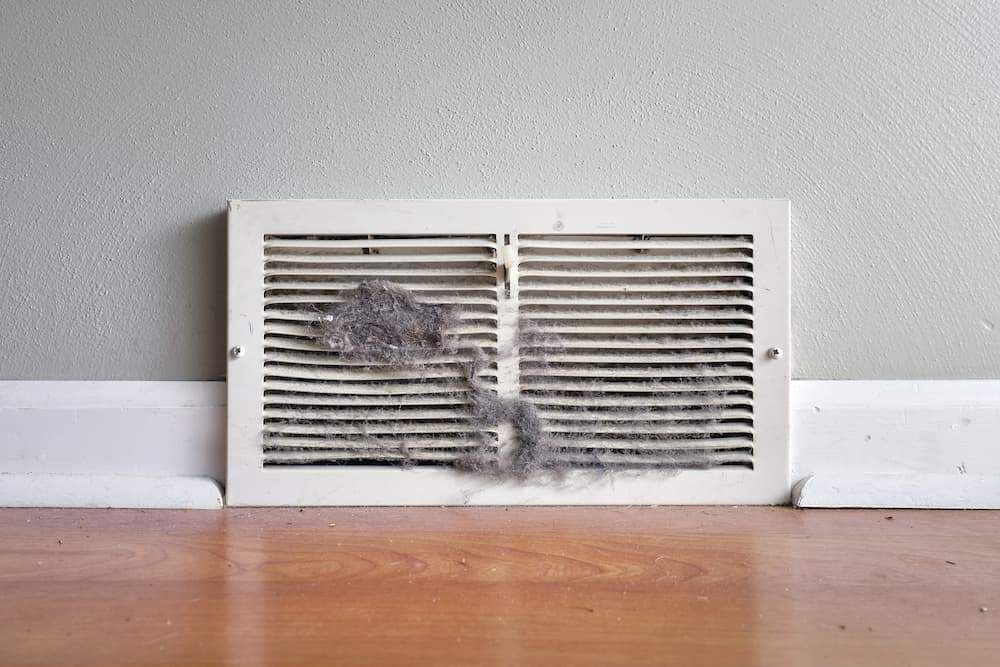
Air Duct Cleaning FAQ: What You Need to Know Welcome to the Vortex Blog! If you've been wondering whether air duct cleaning is worth it—or when and how often to get it done—we’ve got answers. At Vortex Air Duct Cleaning, Restoration, General Contractor, we help homes and businesses in Derby and Wichita, KS breathe easier with professional, thorough duct cleaning services. Let’s take a look at some of the most common questions we hear from customers just like you. Q: Why Is Air Duct Cleaning Important? A: Over time, your air ducts can collect dust, pet hair, allergens, mold spores, and even debris from past construction work. All that buildup circulates through your home or office every time your HVAC system runs. Here’s what professional duct cleaning can do for you: Improve Indoor Air Quality – Reduce airborne irritants and breathe fresher, cleaner air. Boost HVAC Efficiency – Unclogged ducts allow your system to run smoothly, saving energy and lowering utility bills. Eliminate Odors – Get rid of musty smells caused by trapped dust and debris. Q: How Often Should I Clean My Air Ducts? A: The answer depends on your environment and lifestyle. We recommend: Every 2–3 years for homes with pets, allergy sufferers, or smokers After renovations or major home repairs If you notice dust buildup, unpleasant odors, or uneven airflow Q: Can I Clean My Air Ducts Myself? A: While there are DIY options out there, they often don’t get the job done right. Without commercial-grade equipment and proper training, it’s easy to stir up more dust than you remove. Our team at Vortex uses specialized vacuums and negative air pressure systems to safely remove contaminants and improve air quality—without making a mess. Q: What’s Included in Vortex’s Duct Cleaning Service? A: We don’t cut corners—our process is designed for maximum results with minimal disruption to your space: Inspection – We assess your ducts and HVAC system to identify problem areas. Preparation – We protect your space and set up all equipment. Deep Cleaning – Using powerful vacuums that create negative air, we clean your air handler, blower motor, coils, and trunk lines. Dryer Vent Cleaning – We inspect and clean your dryer vent to help reduce fire risks and improve performance. Post-Cleaning Evaluation – We ensure your system is running clean and efficiently before we wrap up. Q: Is Air Duct Cleaning Worth the Cost? A: Definitely. Regular duct cleaning helps extend the life of your HVAC system, improves indoor air quality, and reduces allergens and odors. It’s a smart investment in your comfort and health. Q: Do Businesses Need Duct Cleaning Too? A: Absolutely! Offices, retail spaces, and other commercial buildings experience higher HVAC usage and foot traffic. That means more dust, debris, and allergens in the air. Our commercial duct cleaning services help keep your workspace clean, comfortable, and healthy for employees and clients alike. Serving Derby & Wichita, KS At Vortex, we’re here to help you create a cleaner, healthier indoor environment. Whether it’s your home or business, we offer reliable, professional air duct cleaning you can trust. 📞 Call or text us today at (316) 393-6274 to schedule your service or ask a question—we’re always happy to help!
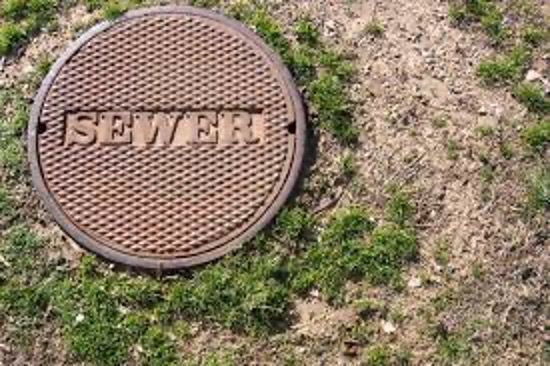
When sewer problems arise, they can quickly escalate into a serious and stressful situation. Sewer backups, toilet overflows, and flooded basements not only create a mess but also pose serious health risks due to harmful bacteria and pathogens in the water. Whether it’s an emergency sewer backup in Wichita or black water damage restoration in your home, it’s crucial to act fast and rely on a professional sewer cleanup company.At Vortex, we understand the urgency and stress that comes with sewer-related emergencies. That’s why we provide 24/7 sewer removal services to ensure you get the help you need—right when you need it. From sewage water removal to complete restoration, we’re here to make your home safe, clean, and livable again. Why Sewer Backups Are a Serious Issue Sewer backups happen for a variety of reasons, including clogged drains, damaged sewer lines, or heavy rain overwhelming the system. When a backup occurs, it can lead to: • Biohazard Risks: Sewer water, also referred to as "black water," contains harmful bacteria, viruses, and other pathogens that can cause serious illnesses. • Property Damage: Water from a sewer line backup can ruin flooring, walls, furniture, and personal belongings. • Mold Growth: If not addressed promptly, standing water or moisture from a sewer backup can lead to mold growth, compounding the damage. No matter the cause, it’s important to address a sewer backup immediately to minimize damage and protect your family’s health. That’s where we come in. Emergency Sewer Cleanup Services in Wichita When disaster strikes, time is critical. Our team at Vortex offers emergency sewer cleanup services in Wichita to handle any sewer-related issue, including: • Addressing Sewage Backups: If your property experiences a sewer backup, we’ll focus on removing contaminated water and cleaning the affected areas thoroughly to restore safety. • Toilet Overflow Cleanup: Overflowing toilets can quickly spread contaminated water throughout your home. Our team will clean and disinfect the area to restore your space. • Flooded Basement Sewer Cleanup: If a sewer backup floods your basement, we’ll provide immediate water removal and start the drying process to prevent further damage. • Sewage Water Removal: Using advanced equipment, we’ll extract all contaminated water from your home quickly and safely. Thorough Sewer Damage Restoration in Wichita At Vortex, we’re proud to offer the best sewer damage restoration services in Wichita. Our process is detailed and designed to address every aspect of the issue: 1. Assessment: We’ll identify the source of the sewer backup and determine the extent of the damage. 2. Sewer Water Removal: Our powerful equipment allows us to remove water and debris quickly. 3. Disinfection and Cleanup: Using professional-grade cleaners, we’ll sanitize the affected areas to eliminate bacteria and odors. 4. Restoration: From repairing damaged floors and walls to addressing mold concerns, we’ll fully restore your home to its pre-damage condition. Why Partner with Vortex for Sewer Cleanup? Sewer backups can be quite challenging and disruptive. At Vortex, we’re here to provide thoughtful, professional services to help you get back on track. Here’s what makes us the ideal choice for sewer restoration in Wichita: • Around-the-Clock Service: Sewer emergencies can happen at any time, and we’re available 24/7 to provide immediate assistance. • Full-Service Solutions: From sewage mitigation and cleanup to complete property restoration, we handle every step of the process. • Skilled Professionals: Our experienced team has the expertise to address complex situations, including biohazard sewage cleanup and black water damage restoration. • Rapid Response: We act quickly to remove water, prevent further damage, and restore your home’s safety and comfort. Don’t Wait—Call Us for Sewer Cleanup in Wichita If you’re dealing with a sewer backup, don’t wait to address the issue. Contact Vortex for emergency sewer cleanup services in Wichita today. With our expertise, and dedication to customer care, we’ll make sure your home is safe, clean, and restored as quickly as possible.
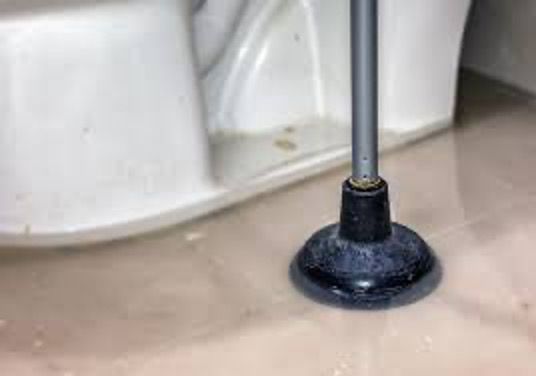
Sewer issues are some of the most stressful and hazardous problems a homeowner or business owner can face. From a sewer line backup to a toilet overflow cleanup, these situations require immediate attention to prevent further damage and protect your health. At Vortex, we’re proud to provide the best sewer damage restoration in Derby, offering professional and compassionate services when you need them most. Whether it’s sewer water removal in Derby and Wichita or a flooded basement sewer cleanup, our team is here to help restore order to your home or business. Common Causes of Sewer Backups Sewer backups can happen unexpectedly, and understanding the most common causes can help you take preventative steps. These Include: • Clogged Drains: Grease, food particles, hair, and other debris can block your drains and eventually cause a backup. • Tree Roots: Roots can grow into sewer lines, causing damage and blockages. • Sump Pump Failure: A malfunctioning sump pump can lead to water backing up into your basement during heavy rain. • Aging Sewer Lines: Older homes with outdated plumbing systems are more prone to backups and leaks. If you’re experiencing a backup, don’t hesitate to call our team for sewage water removal and restoration services. Emergency Sewer Backup Services in Derby At Vortex, we understand that sewer emergencies can’t wait. • That’s why we offer 24/7 sewer removal services in Derby to address your needs right away. Our services include: • Sewer Line Backup Cleanup: We’ll address the source of the backup and clean the affected areas. • Immediate Water Removal: Fast action is key to preventing further damage, and our team is equipped to remove standing water quickly. • Biohazard Sewage Cleanup: Sewer water contains dangerous pathogens, so we’ll ensure all contaminated areas are thoroughly sanitized. • Sewage Mitigation and Cleanup: We’ll dry and disinfect your property to prevent mold growth and eliminate odors. Serving Both Residential and Commercial Properties Sewer issues don’t just affect homes—they can disrupt businesses as well. That’s why we offer services for both home sewer line cleanup and commercial sewer damage restoration. Whether it’s a clogged drain backup in your home or a flooded basement sewer cleanup in your business, we have the expertise to handle it all. Why Choose Vortex for Sewer Cleanup in Derby? When it comes to emergency sewer backup services, you need a team you can trust. At Vortex, we offer: • 24/7 Availability: We’re always here to help, no matter when disaster strikes. • Fast Response Times: Our team understands the importance of immediate action. • Comprehensive Care: From toilet overflow cleanup to complete restoration, we provide end-to-end services. • Compassionate Approach: Sewer emergencies can be stressful, and we’re here to provide support and peace of mind throughout the process. When sewer problems arise, don’t wait—call the experts at Vortex for sewer water removal in Derby and Wichita and complete restoration services. Whether it’s a small issue or a major disaster, we’re here to help with professionalism, care, and expertise. Contact us today for fast, reliable service you can count on.

Understanding Mold: Essential Facts for Home and Business Owners In this post, we delve into the often-overlooked topic of mold and its implications for both residential and commercial properties. Mold growth can pose significant health risks and lead to extensive property damage if not addressed promptly. At Vortex, serving Derby, KS, and Wichita, KS, we specialize in mold evaluation, removal, and remediation services, ensuring that your space remains safe and healthy. What is Mold? Mold is a type of fungus that thrives in damp environments. It reproduces by releasing spores into the air, which can easily travel and settle in various locations. Conditions that favor mold growth include: High humidity levels Water leaks or flooding Poor ventilation Common types of mold include Aspergillus, Penicillium, and Stachybotrys (often referred to as black mold). Each type has its own characteristics and potential health impacts. Indoor vs. Outdoor Mold Levels It's crucial to understand the difference in mold spore concentrations indoors and outdoors: Outdoor Air: Studies have shown that outdoor air can contain anywhere from 1,000 to 100,000 mold spores per cubic meter, varying with the season and weather conditions. Indoor Air: Ideally, indoor mold spore levels should be much lower, between 200-500 spores. Elevated levels, around 1,500-3,000 spores may indicate a source of mold growth. This may be a cause for concern, particularly for individuals with sensitivities. Some sources could be water damage or insufficient ventilation. Health Implications of Mold Exposure Exposure to mold can result in various health issues, particularly for sensitive individuals. Common symptoms include: Allergic reactions such as sneezing, coughing, and skin irritation Respiratory issues, especially for individuals with asthma or compromised immune systems Chronic fatigue and headaches Certain mold species, particularly black mold, can produce mycotoxins, which are harmful when inhaled or ingested. How Mold Enters Your Property Mold spores can infiltrate your home or business through several pathways: Open Windows and Doors: Mold spores can easily enter through openings in your building. HVAC Systems: Central air systems can circulate mold spores throughout your space if not properly maintained. Water Damage: Any leaks, flooding, or condensation can provide the moisture necessary for mold to thrive. The Importance of Mold Evaluation and Air Sampling Understanding the scope of a mold issue is critical. A mold evaluation typically involves: Visual Inspection: Trained professionals assess visible mold and potential sources of moisture. Air Sampling: By collecting air samples, some companies can measure the concentration of mold spores and identify the types present. This data helps guide our remediation efforts and ensures a comprehensive approach to mold management. Interesting Facts About Mold Mold can begin to grow within 24-48 hours after water damage occurs. Prompt action is essential to prevent extensive mold growth. There are over 100,000 species of mold, but only a small fraction poses health risks to humans. Effective mold remediation involves more than just removal; it also includes identifying and eliminating moisture sources to prevent future growth. How Vortex Can Assist You If you suspect mold growth in your home or business, Vortex is here to help. Our comprehensive mold remediation process includes: Detailed Inspection: We identify the extent of the mold problem and assess the underlying moisture issues. Containment: To prevent mold spores from spreading, we isolate affected areas during the remediation process. Professional Removal: We use advanced techniques and equipment to remove mold safely and effectively. Post-Remediation Evaluation: After the removal process, we conduct follow-up inspections to ensure the mold has been effectively eliminated and that the environment is safe. Conclusion Understanding mold and its implications is vital for maintaining a safe and healthy indoor environment. If you are experiencing mold-related issues or need a mold evaluation in Derby, KS, or Wichita, KS, don’t hesitate to reach out to Vortex. Our team is dedicated to providing effective mold removal and remediation services tailored to your needs. Contact us today to ensure your space is mold-free and safe for occupants.

We are dedicated to restoring spaces with the utmost care and respect for what you’re going through. This article will walk you through our services, the importance of professional cleaning after traumatic events, and how we can help during these challenging times. Understanding the Need for Professional Cleanup Services When a traumatic event occurs, such as an unattended death, suicide, or homicide, the emotional impact can make it difficult for loved ones or property owners to address the physical aftermath. Beyond the emotional challenges, there are also serious safety concerns to consider. Bloodborne pathogens, bacteria, and other biohazards can pose risks to anyone attempting to clean the scene without proper training. That’s where professional bio-cleaning services like Vortex come in. Our team specializes in handling the complexities of these situations with care and expertise. We’re not just cleaning a space—we’re helping to safeguard your health and restore the environment so you can focus on healing. Services We Provide At Vortex, we offer a wide range of bio-cleaning services tailored to meet the needs of individuals and businesses in Wichita, Kansas, and Derby, Kansas. Here’s a closer look at what we do: 1. Unattended Death Cleaning When a person passes away alone and is not discovered for an extended period, the decomposition process begins, leading to potential health hazards and strong odors. Our unattended death cleaning services focus on removing all biohazards, thoroughly sanitizing the area, and providing decomposition odor removal to restore the space to safety. 2. Homicide Cleanup Homicides are tragic events that leave behind emotional scars and physical remnants of the incident. Our team approaches every homicide cleanup with sensitivity and professionalism, ensuring that all biohazards are removed and the space is disinfected to prevent any risk of infection or contamination. 3. Suicide Cleanup Suicide is a deeply personal and painful experience for families and loved ones. We approach suicide cleanup with compassion and respect, recognizing the emotional weight of the situation. Our goal is to handle the details so you don’t have to, providing thorough cleaning, disinfectant after death, and restoring the space with care. 4. Trauma Scene Cleaning Trauma scenes can result from accidents, violent events, or other unfortunate incidents. These situations often involve blood cleanup and the presence of biohazards, which require specialized training and equipment to address safely. Our team follows strict protocols to clean, disinfect, and restore the area. 5. Blood Cleanup Blood is a biohazard that can carry pathogens such as hepatitis B, hepatitis C, and HIV. Whether it’s from an accident, medical emergency, or traumatic event, blood cleanup must be handled carefully and thoroughly. Our team is trained to safely remove blood and other biohazards while ensuring the area is completely sanitized. 6. Decomposition Odor Removal One of the most challenging aspects of after-death cleanup is addressing the odor that accompanies decomposition. This odor can linger even after visible signs of the incident are removed. We use advanced techniques and equipment to eliminate odors at their source, ensuring the space is not only clean but also free of lingering smells. Why Professional Cleanup Matters Some people may feel tempted to handle the cleanup themselves, either to save money or because they feel a sense of responsibility. However, attempting to clean a trauma scene without proper training and equipment can pose significant risks. Here are a few reasons why professional cleanup is essential: 1. Health and Safety Exposure to biohazards can lead to serious health risks, including infections and diseases. Our team uses specialized equipment and cleaning agents to safely remove all biohazards, ensuring the area is safe for reentry. 2. Proper Disinfection A surface may look clean to the naked eye, but bacteria and pathogens can linger if the area is not properly disinfected. We use hospital-grade disinfectants and adhere to strict cleaning protocols to ensure that every surface is thoroughly sanitized. 3. Odor Elimination Decomposition and biohazards can leave behind strong, unpleasant odors that are difficult to remove with standard cleaning products. Our advanced odor removal techniques target odors at their source, leaving the space fresh and free of unpleasant smells. 4. Emotional Support Cleaning a trauma or death scene can be emotionally overwhelming, especially for family members or loved ones. Hiring a professional team allows you to focus on healing while we take care of the details. What to Expect When You Call Vortex We understand that reaching out for help after a traumatic event can be difficult. That’s why we strive to make the process as simple and stress-free as possible. Here’s what you can expect when you contact us: 1. Compassionate Communication When you call Vortex, you’ll be met with kindness and understanding. We know how challenging this time is for you, and our team is here to listen and provide the support you need. 2. Immediate Response We offer prompt service to Wichita, Kansas, Derby, Kansas, and the surrounding areas. Our team is available to respond quickly, ensuring that the cleanup process begins as soon as possible. 3. Discreet Service We respect your privacy and handle every case with discretion. Our vehicles and uniforms are unmarked to avoid drawing unwanted attention to the situation. 4. Thorough Cleaning and Disinfection Once on-site, our team will assess the situation and create a customized cleanup plan. We’ll remove all biohazards, thoroughly disinfect the area, and ensure that the space is safe and habitable. 5. Compassionate Closure Our goal is to provide more than just a clean space—we want to help you find closure and begin the healing process. We approach every job with empathy and care, recognizing the emotional weight of these situations. Serving Communities with Care and Expertise At Vortex, we are proud to serve the communities of Wichita, Kansas, Derby, Kansas, and the surrounding areas. We believe in providing not only expert cleaning services but also compassionate support during times of need. Our team is trained to handle even the most challenging situations with professionalism, respect, and care. If you or someone you know is in need of after-death cleanup, blood cleanup, or trauma scene cleaning, please don’t hesitate to reach out. We’re here to help you navigate this difficult time and restore your space with dignity and care.
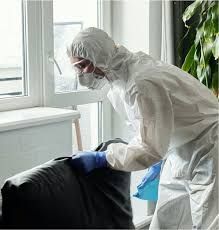
Experiencing an unattended death in a home is a profoundly tragic event that can leave property managers and homeowners feeling overwhelmed. At Vortex, we understand the emotional and logistical challenges that arise during such sensitive situations. Our team is dedicated to providing comprehensive services that ensure a respectful and thorough cleanup. After an unattended death, the need for professional assistance becomes critical. No one should have to navigate the complexities of after death clean up alone. The process often involves dealing with decomposition odors, bodily fluids, and potential biohazards. Our trained professionals are equipped to handle these daunting tasks, ensuring that the property is restored to a safe and livable condition. One of the primary services we offer is disinfectant cleanup. This process not only addresses visible contamination but also eliminates harmful pathogens that may be present. Our team employs advanced techniques and products specifically designed for trauma scene cleaning. We understand the importance of removing all traces of the incident, including any lingering odors associated with decomposition. For property managers and homeowners in Wichita, KS, and Derby, KS, it’s essential to act quickly. Delaying cleanup can lead to further complications, including structural damage to the property and increased health risks. Our professionals are trained in decomposition odor cleanup, which is crucial in restoring the environment to a safe and pleasant state. We utilize state-of-the-art equipment and methods to ensure that all odors are effectively neutralized. In cases involving unattended suicides or homicides, the emotional toll can be incredibly heavy. Our team approaches each situation with the utmost compassion and respect for the individuals involved. We prioritize sensitivity while providing thorough residential death cleaning services. Our goal is to alleviate the burden on property managers and homeowners, allowing them to focus on healing and moving forward. Blood cleanup is another critical aspect of our services. The presence of blood can pose significant health risks if not handled properly. Our trained specialists follow strict protocols to ensure that all biohazardous materials are disposed of safely and in compliance with local regulations. We take pride in our professionalism and commitment to restoring properties to their original condition. At Vortex, we recognize that every situation is unique. Our team is dedicated to tailoring our services to meet the specific needs of each property manager or homeowner. We are here to guide you through every step of the process, offering not only our expertise but also a compassionate approach during this difficult time. If you find yourself in need of assistance after an unattended death, don’t hesitate to reach out. Our team is available to provide the support you need, ensuring that your property is treated with the care and respect it deserves. Let Vortex help you navigate this challenging experience with dignity and professionalism.
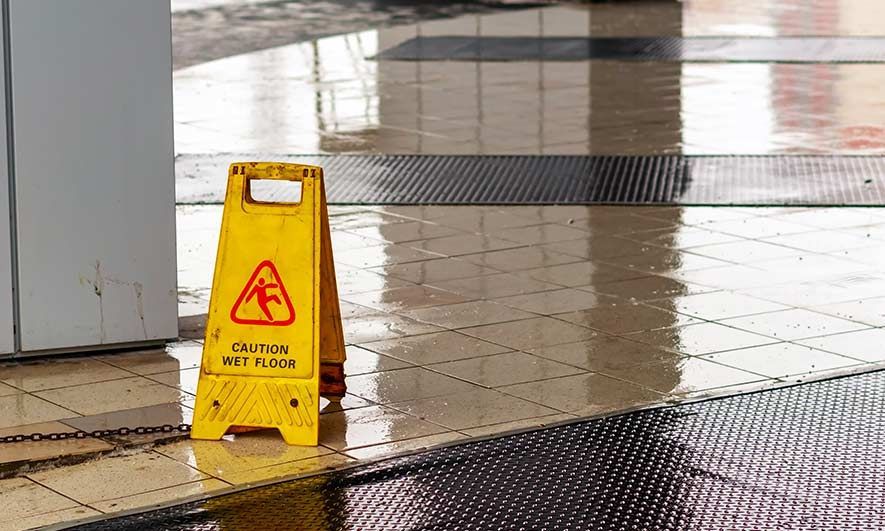
Seasonal Maintenance Tips to Prevent Water Damage and Keep Your Home Safe As a homeowner, one of your top priorities should be protecting your property from water damage. Whether it’s from a leaky roof, clogged gutters, or frozen pipes, water damage can cause serious issues, including mold growth, structural damage, and expensive repairs. The good news is that with a little preventive maintenance, you can avoid many of these problems and keep your home safe throughout the year. At Vortex Air Duct Cleaning, Restoration, and General Contractor, we understand how important it is to safeguard your home from water damage. That’s why we’ve put together this seasonal maintenance checklist to help you stay ahead of the weather and protect your property. 1. Inspect and Clean Your Gutters and Downspouts Your gutters are your first line of defense against water damage, especially during the rainy and snowy months. Clogged gutters can cause water to overflow, leading to leaks in your roof, walls, or basement. Tip: Clean your gutters at least twice a year—once in the spring and once in the fall. Make sure downspouts direct water away from your foundation to avoid pooling. 2. Check Your Roof for Damage A damaged roof can lead to leaks, water stains, and mold growth. Check for loose, missing, or damaged shingles, and inspect flashing around chimneys, vents, and skylights. Tip: If you’re not comfortable on a ladder, consider hiring a professional to perform a thorough roof inspection, especially after a heavy storm or winter. 3. Maintain Your Sump Pump If your home has a sump pump, it plays a critical role in preventing basement flooding. Before the rainy season, test the pump to ensure it’s working properly. Tip: Consider installing a battery backup for your sump pump in case of power outages during heavy storms. 4. Insulate Pipes to Prevent Freezing In the winter months, frozen pipes are a major cause of water damage. When water freezes inside pipes, it expands, which can cause the pipes to burst and flood your home. Tip: Insulate pipes in unheated areas (attics, basements, and crawl spaces) with foam or heat tape. Let faucets drip during extremely cold temperatures to keep water flowing. 5. Seal Gaps and Cracks in Exterior Walls Even small cracks or gaps in your home’s foundation, windows, and doors can allow water to seep into your basement or walls. Sealing these areas helps prevent water intrusion. Tip: Use caulk or weatherstripping to seal cracks around windows, doors, and vents. Check the foundation for any visible cracks and fill them promptly. 6. Check Your Window Wells and Basement If you have window wells, make sure they’re clear of debris. Clogged window wells can trap water, which can seep into your basement during heavy rain or snowmelt. Tip: Install clear, plastic covers over your window wells to prevent debris from collecting and to help direct water away from your home’s foundation. 7. Clear Your Drainage Systems Ensure that the drainage system around your home is working effectively. This includes checking the grading of the land near your foundation to make sure water flows away from your house. Tip: The ground around your home should slope away from the foundation. If it doesn’t, consider regrading the soil to avoid water pooling near the foundation. 8. Inspect Your Air Ducts and Ventilation Proper airflow is crucial for maintaining a dry and healthy home. Dirty air ducts can trap moisture, which can lead to mold and mildew growth, especially in damp areas like basements. Tip: Schedule a professional air duct cleaning to ensure proper ventilation and reduce the risk of mold growth in your home. 9. Check Your Water Heater and Appliances Leaking or malfunctioning appliances like water heaters, dishwashers, and washing machines can cause significant water damage. Regularly inspect these appliances for signs of wear and tear, leaks, or rust. Tip: Replace any worn-out hoses on your washing machine and check your water heater for any signs of leaks or corrosion. Consider installing a leak detection system that can alert you to issues before they cause damage. 10. Keep an Eye on Your Basement Basements are particularly vulnerable to water damage, so it’s important to regularly inspect the area for signs of moisture or leaks. Tip: Install a dehumidifier in your basement to keep the air dry, and check for any signs of mold or mildew, which are red flags for water damage. Why Choose Vortex for Your Water Damage Prevention Needs? At Vortex Air Duct Cleaning, Restoration, and General Contractor, we offer a range of services to help you protect your home from water damage. From thorough air duct cleaning to professional restoration and general contracting services, we can assist with everything you need to keep your home dry and safe year-round. Need help with water damage prevention or maintenance? Contact us today for a consultation or inspection. Let us help you keep your home protected from water damage and ensure it stays safe, comfortable, and healthy for years to come. By following these seasonal maintenance tips, you’ll be well on your way to preventing water damage and protecting your home from the elements. If you have any questions or need professional assistance, don’t hesitate to reach out to us at Vortex Air Duct Cleaning, Restoration, and General Contractor. Stay safe and dry this season! #WaterDamagePrevention #HomeSafety #SeasonalMaintenance #GeneralContractor #AirDuctCleaning #Restoration #HomeImprovement #VortexAirDuctCleaning

